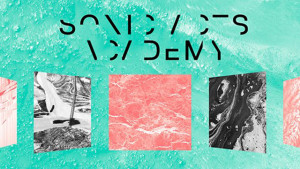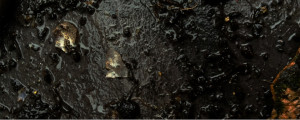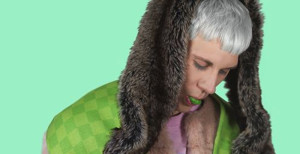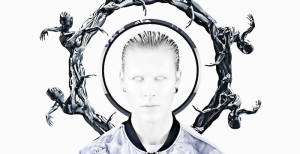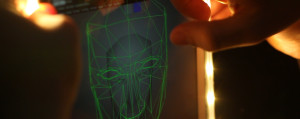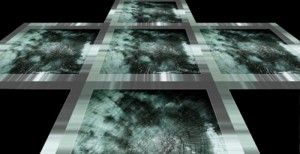“I really like the whole idea of this hyper-object”, says Liverpool-based Kepla, “this idea that you can start beginning to understand the Anthropocene and climate change when you start thinking at earth magnitude. It’s not just about your own micro sensibilities but about this massive stretch of time…” Including tracks from Fis, Eli Keszler, Rosen, Yearning Kru and Morton Feldman, Kepla’s mix for aqnb concerns the macro forms that arise from the interplay between each. His own tracks, too —such as the featured ‘Veata’s Call’ —embrace the same ontology.
Incidentally, with an affinity for other producers like Brood Ma, Ornine, and Renick Bell, Kepla is part of a crop of emerging artists purposing analogous changes to the musical climate itself. “At the moment we’re making a lot of contemporary music where we cling too much to what we see as real”, he suggests. Centrally, Kepla’s work is about geology and the dynamics of the earth, but it doesn’t sound like rain or rocks clanging together. Rather, it rejects the normal hierarchy of humans above objects, embracing more of a network exchange in terms of control.
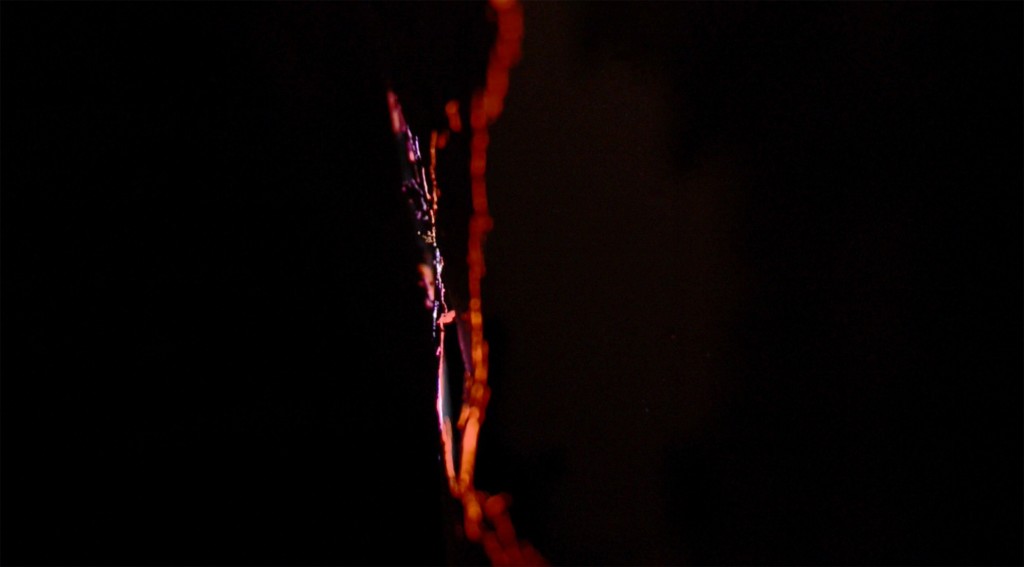
Aside from his solo efforts, Kepla (aka Jon Davies) has been co-running Liverpool’s Deep Hedonia since 2012, putting on artists such as Dean Blunt and Dialect. As well as putting together an EP, touring with William Basinski and working on the play ‘The Happy Jug‘ (2015) — “about personal and political trauma in relation to a totemic moment” — he’s also involved with grime producer Ling, who’s upcoming EP is set for release on Visionist’s Codes imprint. Together, they’ve been working with an Iranian MC, making what Davies describes as double-layered esoteric music: “For me, what’s really interesting is not only that we are potentially making the first Farsi-spoken grime music, but what me and Ling are doing is still pretty out there for grime music anyway”.
Kepla’s own sound, though, is more amorphous than the high-tech style of other producers dealing in a similar manner. According to the artist, it goes back to thinking “about sediment and oil as degraded life”, in opposition “to an idea of dystopia being a hardened anthropocentric future”. Based on the idea of the Apeiron — a classical Greek word meaning ‘unlimited’, ‘infinite’ or ‘indefinite’ — the individual is viewed as part of an elemental ecology, or “primordial soup”: “I started working on granular synthesis, asymmetrical rhythms and meandering melodies, it felt like I was excavating samples that I’d picked up to find layers underneath layers”, he says.
At the same time, Kepla’s music stems just as much from an interest in nemocentrism — “actions and objects that are ambivalent to an audience, actively alienating or nihilistic in operation” — moving away from typical provisions of music insisting on its forum, such as a concert or listening to an album at home. In our conversation on Skype, he refers to a flood of inspiration, from reading Reza Negarestani’s Cyclonopedia, speculative realism and object-oriented ontology, to hearing Graham Harman and Tim Morton talk about the Anthropocene and imagining how that can be bound up with sound…
**…is this the thinking behind your music?
Kepla: Yes, that’s kind of the thinking behind the tracks that I’ve been releasing over the past year, and it’s been slowly morphing into trying to incorporate more mystical stuff that I’m lazily reading right now, like Eugene Thacker, who writes about the Horror of Philosophy. Another thing I read up was about this Japanese philosopher called Keiji Nishitani, who’s inspired by Zen buddhism and Nietzschean nihilism. Instead of nihilism being a constantly destructive thing, you’re almost as a person striving to create this emptiness within yourself to become open, and to lose one’s ego, maybe in order to fit within the rest of your wider ecology, which is something that I want to embrace in music.
** Would you say it’s more a symbolic representation of this process or an actual actor in it?
K: I think for me it’s both a personal process as well as something that I obviously want to publish and want people to hear. On the first level, I’m trying to make this sort of music that is not anti-human, but it’s the idea of the object-oriented ontology, of a flattening of layers and the normal hierarchy of humans above objects. I guess it’s me trying to embrace the fact that there are powers higher than what I can do in my life. I think that we’ll see in the next few decades, hopefully, a flattening of the hierarchy within society where we enter more of a network exchange in terms of control as a reaction to ecological crises. With the context behind it, I do want to attach some text to it or, fingers crossed, working with Quantum Natives to create these kind of visual environments that reflect the music would be really great…
** What’s your relation to Quantum Natives?
K: I’ve gotten to know Ornine and James (B Stringer of Brood Ma) and Cliff [Sage of Recsund] firstly reaching out on Soundcloud, then playing shows and hanging out with them. I played their last showcase in a sports bar between gamers on League of Legends, who I don’t think really appreciated our presence. They really remind me of old hardcore punk labels creating an amazing aesthetic without playing the game. I’m halfway through writing my album and coming up with some ideas for added online content. I think the beginning of my affinity with them was talking with Ornine about each other’s history, because he’s currently residing in Taiwan, my mum is Taiwanese, and we both come from Croydon.

** How do you feel about working collaboratively?
K: I think that it’s really good for one’s own peace of mind. For me, it was always interesting to crack open one’s own mind and to face those challenges when you’re working with someone from a different discipline or a different level of performance.
** I’m curious, because even your solo stuff deals a lot with the communal effort of cross contamination and reproduction. Is it hard to define it aside from the collaborative?
K: I think that unless you’re completely hermetic that’s hard anyway, especially if you see the proliferation of certain genres. The cross contamination thing is really interesting because we all subconsciously enter this hive mind anyway. We’re constantly trying to keep afloat with what’s going on whilst trying to keep a certain individual distance and maybe that’s what Kepla’s about in a way.
** What’s the deal with the Ling collaboration?
K: That’s this project that was called Gomnam, which means ‘unknown’ in Farsi. At the moment we’re waiting on the masters to come back. In the meantime, me and Ling have got this mix for Radar Radio and we’re going to try to do more sets together. I think we’re going to do sets that are quite heavy in themselves, I guess in the way that SCRAAATCH do together, really granular deconstruction of club music basically.
** How do you approach your live performances as Kepla?
K: I guess the live set I did for Tropical Waste is the blueprint for what I do. There’s a lot of scope for controlled improvisation. In the last few shows I did supporting William Basinski, I started developing a knowledge of what worked and what didn’t. At certain times I’d be frustrated about what I did in a set. For example, if it wasn’t as banging as I wanted it to be then I’d do a really aggressive moment, and then look up and find people were actually more into the serene moment of it. I think that returns to this collaborative process where the audience and the artist get into this zone together. In my first few sets I’d be really caustic with stuff, but now I really want to have this build up of waves where tension happens quite naturally.
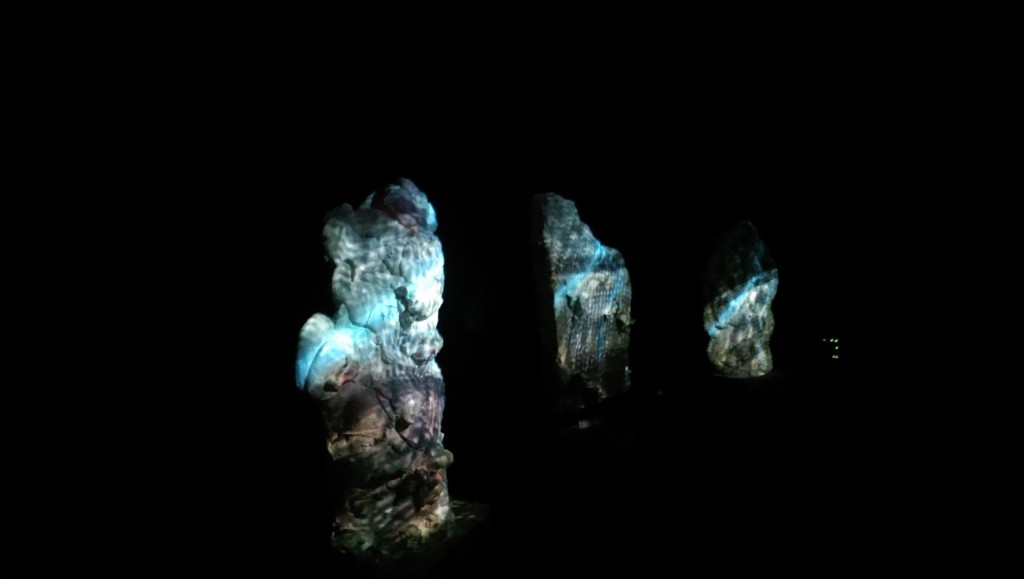
** Especially in a live setting, how do you balance audience engagement with your interest in alienation and nemocentric music?
K: In a way it’s trying to invite people to look inwards. I think you learn a lot of things not only about the world that you live in but about yourself when you do that. I’m not trying to conflate my music to this thing where you listen to my music and you’re doomed [laughs], but maybe it’s part of my personality. I’m constantly attracted to really sad news or tragedy, and understanding the fact that you can be ultimately lost in the world we live in.
When mainstream thought accepts that we’re living in the Anthropocene and accepts that there is climate change it’s already too late, and I guess that’s where I want my music to be placed, or where I want my audience to be placed; where it’s terrifying but, at the same time, maybe it is too late and maybe all we have to do is think about what we can do to prolong existence. But at the same time, why should we think about prolonging existence? Things are born, things happen, and things die, and there’s a certain romanticism to it. I guess with my music, I’m not necessarily trying to sell it as this nemocentric thing, but there’s definitely an invitation for people to…
** …alienate themselves?
K: Yeah, to alienate one’s self is great, because that’s like an inversion of being selfless in a way. I’m always keen to stress that this is not a dark thing for me or a destructive, depressing thought. It’s actually optimistic to absolve yourself and devote yourself to something. I think that the idea of nemocentric music is rather a process of giving away the idea that the world revolves around the needs of the human. If we can navigate ourselves as beings within a wider structure then that’s a lot more credible. **
TRACK LISTING:
Marianne Faithfull – Skye Boat Song (from The Last Of England, Derek Jarman)
Fis – Knecht
Unknown – Homemade instrument, bike cable
Ex-Easter Island Head – untitled
Eli Keszler – Oxtirn
Beatriz Ferreyra – Dans Un Point Infiniti
Fugazi – Rend It (demo)
Toru Takemitsu – Clap Vocalism
JC – 30 FLOORS
Rosen – lliim
Felicia Atkinson – Carve The Concept And The Artichoke
Luc Ferrari – Etude Floue
Nurse With Wound – Nasal Hair
Kepla – Veata’s Call
Istvan Marta – Doom, A Sigh
Domenico’s Speech – from Nostalghia (Andrei Tarkovsky)
Yearning Kru – burning blue lune
Jire – Materiality Notion
Kepla – The Happy Jug (libretto by Nathan Jones, performed by Nina Jones and Imogen Stidworthy
Morton Feldman – Why Patterns?

